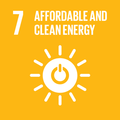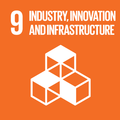Enlighted’s sensors are connected to light fixtures to measure and respond automatically to environmental factors, making buildings more energy-efficient and comfortable for occupants.
Enlighted’s smart sensors can be connected to each light fixture in a building, where they collect occupancy, ambient light, temperature and electricity consumption data. The sensors then increase or dim light levels based on the available daylight and level of occupancy within the space. According to Enlighted, this approach reduces electricity consumption by more than 60%. The lighting level can also be controlled through a remote controller or mobile app.
Enlighted’s smart sensor solutions are reducing energy expenditures while creating a more comfortable and productive environment
Joe Costello – CEO, Enlighted
Enlighted’s energy savings speak for themselves, as the company does not charge installation costs but instead take a slice of customers’ energy savings. Enlighted’s systems are currently reducing energy costs in over 135 million sq ft of building space.
Why you should care
As the need to mitigate global climate change becomes increasingly urgent, the importance of energy efficiency in all sectors is growing. According to the International Energy Agency, lighting accounts for almost 20% of global electricity consumption – a total consumption equivalent to the amount of electricity generated by all nuclear power plants around the world. Enlighted provides a cost-effective solution for companies and households to integrate sustainable and resource-saving practices into their everyday operations. For example, at a university in California, officials estimate that the technology is saving the campus $26,000 in electricity costs annually.
How the Global Goals are addressed

Affordable and Clean Energy
In an installation at a California university, Enlighted’s smart sensors were shown to reduce electricity usage for lighting by 78%.

Decent Work and Economic Growth
Enlighted’s sensors adapt to ambient and natural light, making the indoor working and living environments more comfortable.

Industry, Innovation, and Infrastructure
International Energy Agency projections show that the total savings potential in residential, commercial and industrial lighting will amount to more than 2.4 million terajoules annually by 2030.


